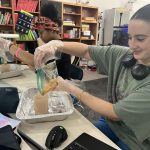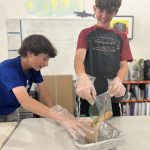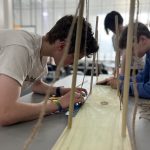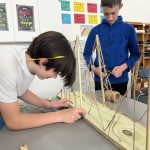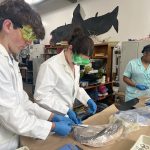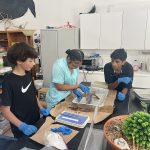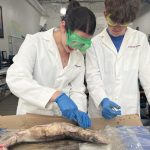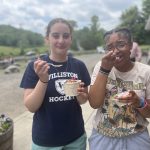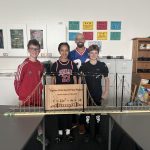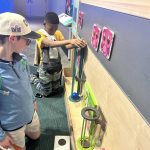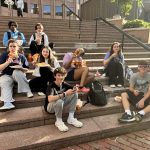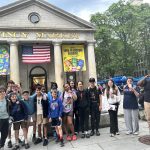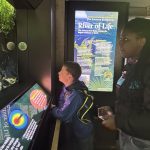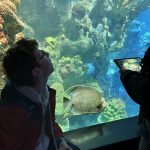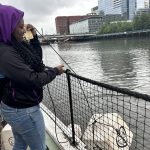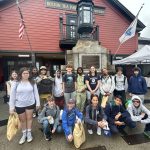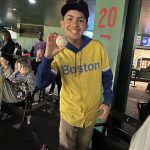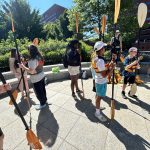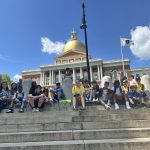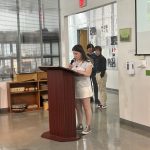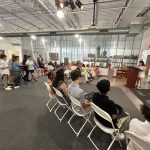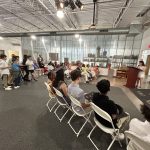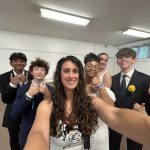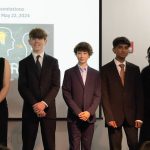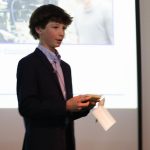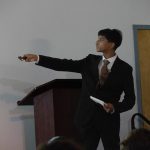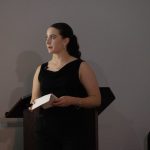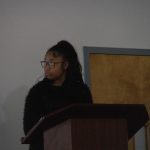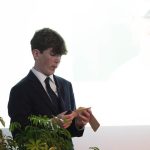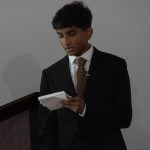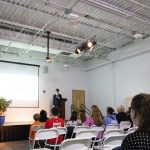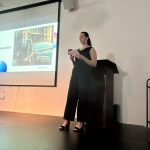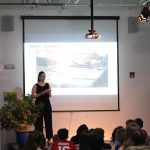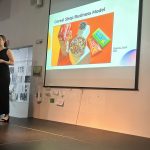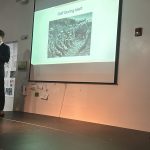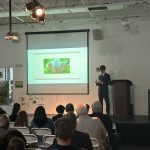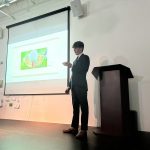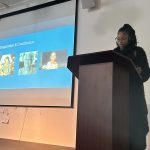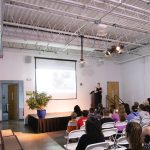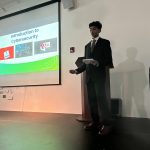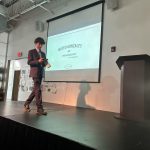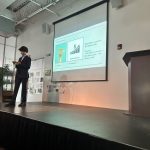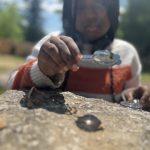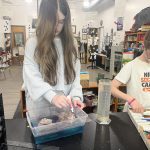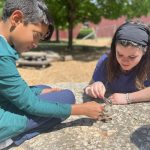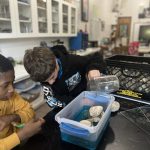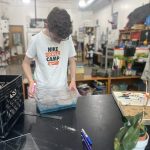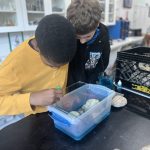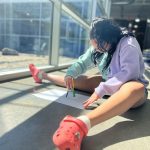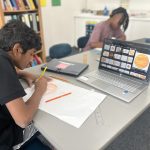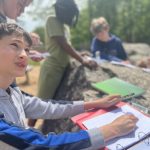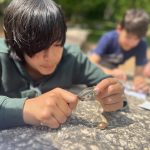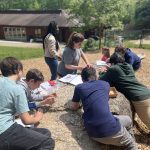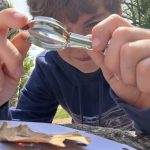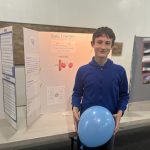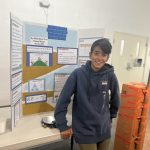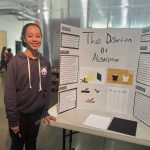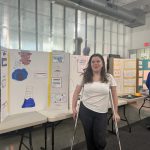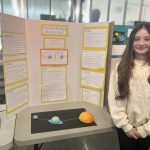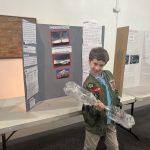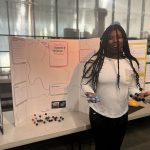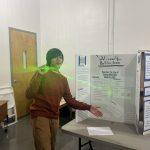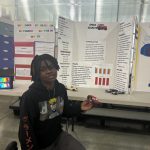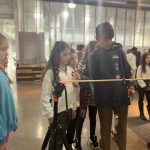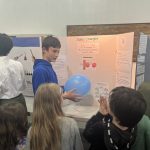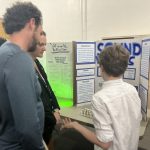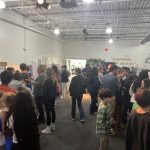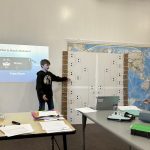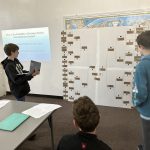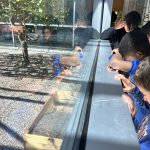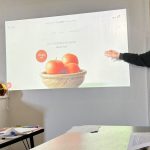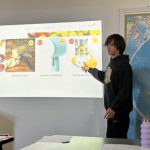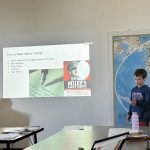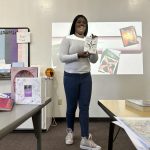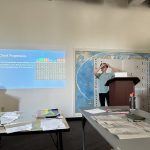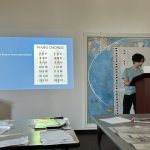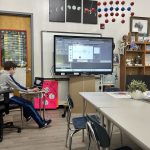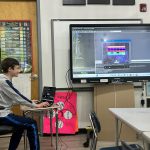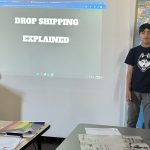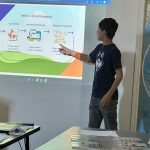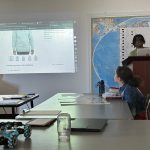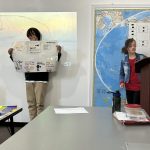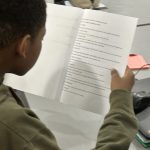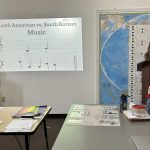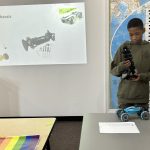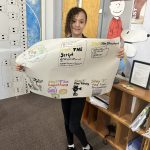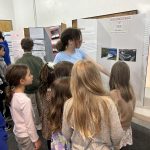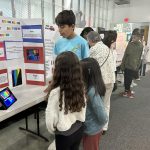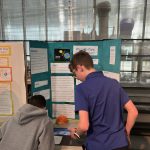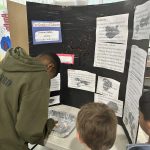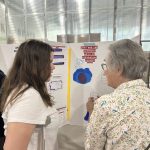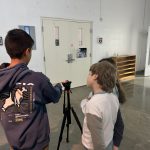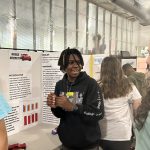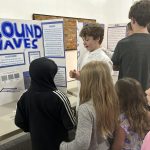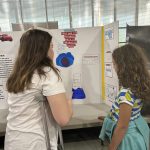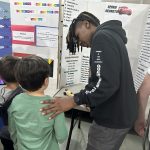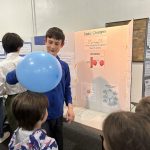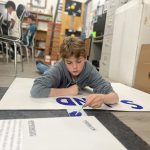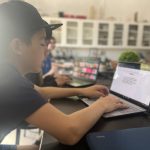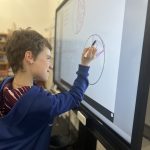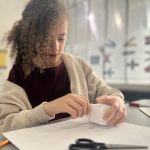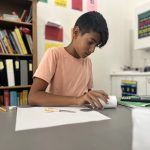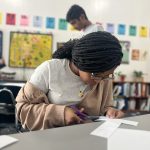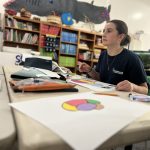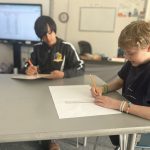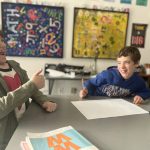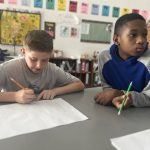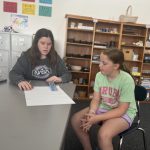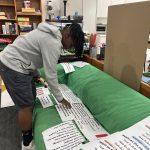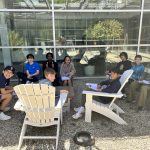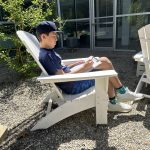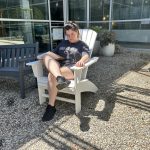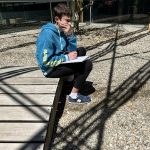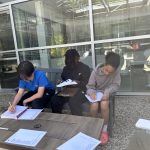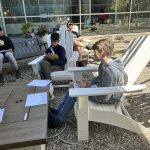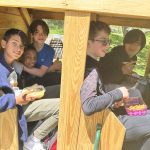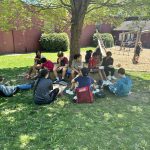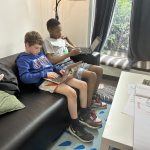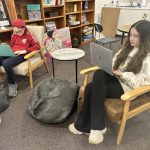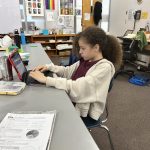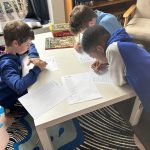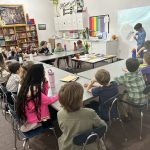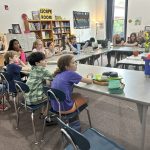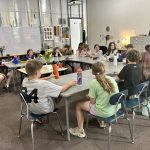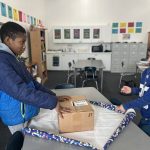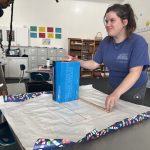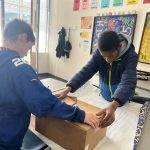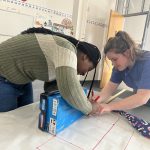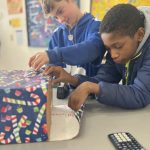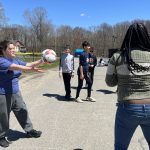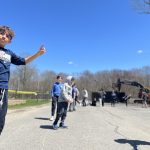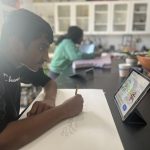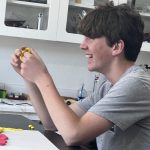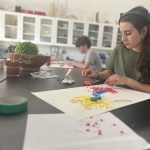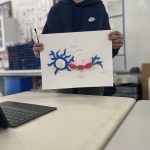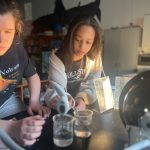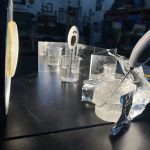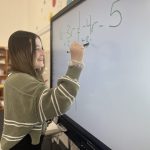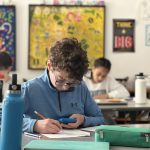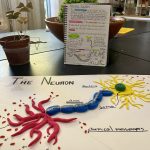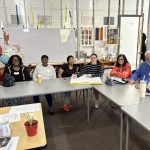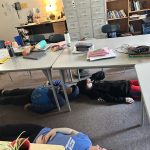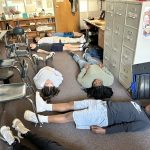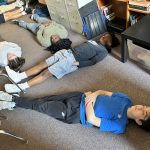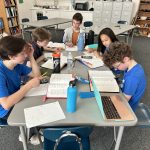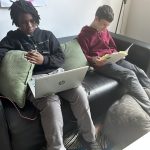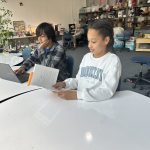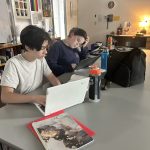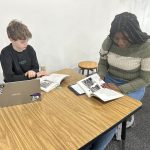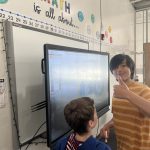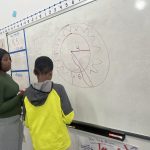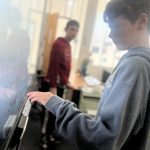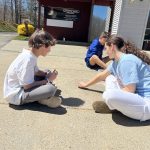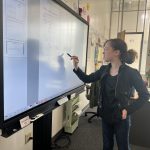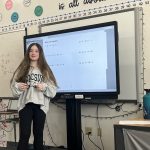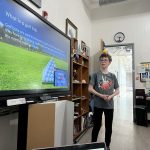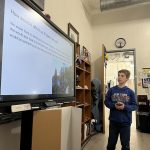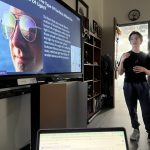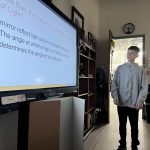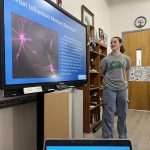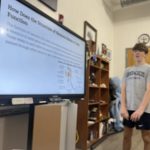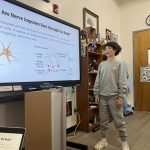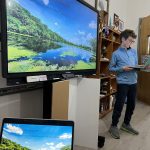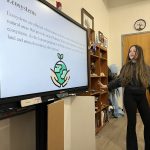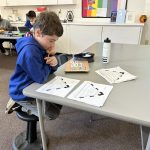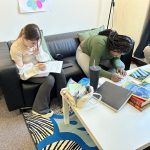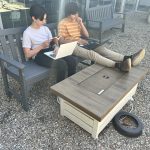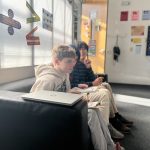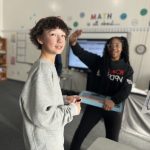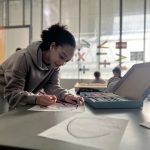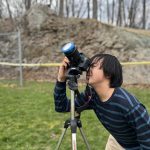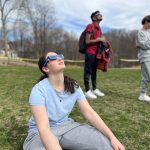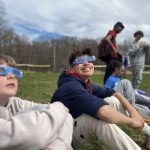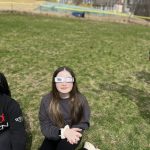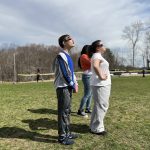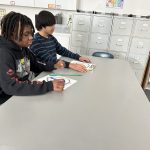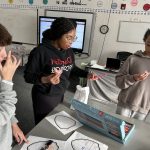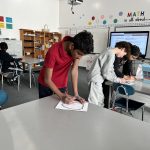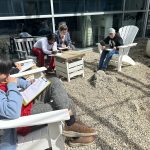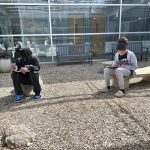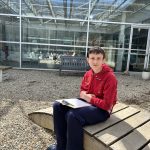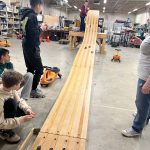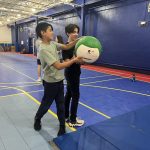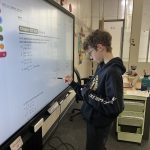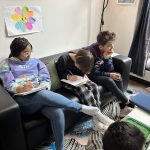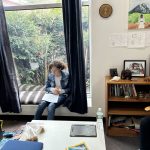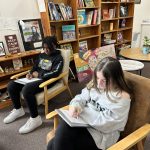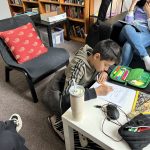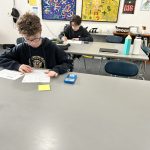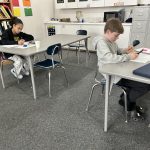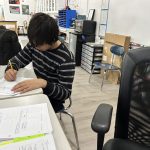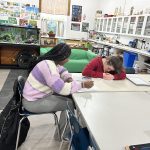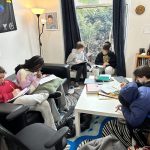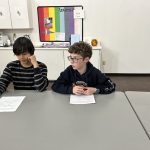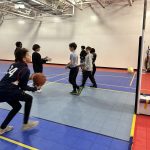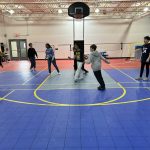IMPORTANT ANNOUNCEMENTS:
- Order your 8th-grade-designed 2024 FWM sweatshirt ASAP! Orders close on 4/27! Click here to order.
- ALSO, we are looking forward to having a great Middle School turnout at this year’s auction, Saturday Night Fraser, on Saturday, 4/26! If you want to see Mr. Brown (and his retro mustache) & Mrs. Lamb in their finest 70s attire, be sure to grab your tickets here: Fraser Woods Auction Tickets
Well it is certainly feeling like spring from the warmer days, eating lunch outside, flowers popping, and all the extra sneezing from those pesky allergies creeping up. The Middle School also enjoyed putting on their glasses and getting outside on Monday to view the solar eclipse.
Here’s what went on in classes this week:
Humanities
The 6th-grade Humanities class had a current events week, so they presented their work and had rich discussions about topics going on in the world right now. This group knows how to have informed conversations while offering their opinions respectfully. Additionally, they continue to annotate and move forward in the class novel, The Eye of Ra. Annotations lead our discussions with important moments to recall, questions to answer, and personal reactions to events. The class is also learning about the engineering and building of the pyramids of Egypt, as this is central to their novel, and they have been learning about the pyramid of Djoser and the Great Pyramids. Finally, the group expressed curiosity surrounding sandstorms after one occurred in this week’s reading. The class then learned about the climate of Egypt, when and how sandstorms occur there, and viewed a giant one from 2023.
The 7th-grade Humanities class also had a current events week. There was a wide range of topics and discussions surrounding the presentations. Additionally, on Poetry Tuesday, we spent a bit of time on the poem “Turtle Came to See Me” by Margarita Engle, a Cuban American contemporary poet. The poem is a great example of how imagery can really make writing come to life. Additionally, the main message of the poem, that adults we see as experts can sometimes be wrong offered a great discussion about how we are all human. Next, 7th-grade students drafted their literary analysis essays for A Long Walk to Water using quotations to support Salva’s claim that perseverance made all the difference in his life.
This week in 8th grade American History with Mr. Newman, students began examining the end of the Civil War and the process of Reconstruction. Students learned about the Emancipation Proclamation, The Compromise of 1877, and the assassination of Abraham Lincoln, to name a few. Next week, they will move into the Gilded Age. With Mrs. Lamb, students continue to read and annotate She Came to Slay, a biography about Harriet Tubman. This week’s annotations prove that this group is moving into high school thinking. The class also took a day to study African American Spirituals: what they are, how they became an important part of Black life during and after slavery, and how they continue to represent an important part of community and culture among Black Americans. They also learned how they played a role in the Underground Railroad. Students read lyrics to a few songs and listened to recordings from the Library of Congress as well as recordings from Marian Anderson, Louie Armstrong, contemporary gospel singers, and Fisk University’s Jubilee Singers. Drafts of expert research papers are due on 4/22.
Math
Pre-Transition students had an engaging week as they were introduced to Chapter 9’s focus on area and volume. From mastering operations of arithmetic to calculating the area of a triangle and parallelogram, students were immersed in the essential concepts that form the foundation of geometry. Through a variety of activities and real-life examples, students gained a deeper understanding of how to calculate and compare different shapes’ areas, setting the stage for more complex geometric explorations in the future.
Throughout this week, Transition students worked on linear equations and inequalities in their Transition mathematics class. They kicked off by exploring how to find solutions by analyzing graphs, followed by mastering the art of solving equations in the form of ax + b = cx + d. Additionally, students learned about graphing linear inequalities of the type y < ax + b. These fundamental concepts are building blocks in understanding the relationships between variables and will continue to shape their problem-solving skills moving forward.
This week, as Algebra students embarked on their journey into the world of polynomials, they worked on exploring concepts such as investments intertwined with polynomials. They tackled the classification of polynomials, learning how to differentiate between terms like binomials, trinomials, and more. Additionally, they honed their skills in multiplying a polynomial by a monomial, mastering the art of these mathematical operations. With this knowledge, students are well on their way to unraveling the mysteries of algebraic expressions and equations.
The geometry class has been working on finding the area of a regular polygon, using their knowledge of special right triangles and the Pythagorean theorem to find the apothem. They have also reviewed simplifying radicals, which are needed to express various lengths of the sides of a right triangle.
Science
In the 6th year of Earth Science studies, students have completed their unit on eclipses, diving deep into the celestial alignment that causes these remarkable phenomena. Following their lessons, students had the unique opportunity to witness an eclipse firsthand this past Monday, allowing them a rare and awe-inspiring experience of this natural occurrence.
7th-year Physical Science students continue to study the unit of reflection, building upon their knowledge from previous years. Through engaging experiments with lasers and mirrors, they are discovering how different surface materials impact the reflection of light. The primary objectives of this unit include designing experiments to evaluate the reflectivity of various materials, recognizing the distinct characteristics of different types of mirrors, and explaining the behavior of light as it reflects off diverse surfaces.
As 8th-grade Life Science students wrap up their exploration of the circulatory system, they dive into the intricate world of the nervous system. In this upcoming unit, students will unravel the mysteries of the brain, spine, and nerves that control our every move. They will explore the details of neurons and the building blocks of our nervous system and understand how these specialized cells function and communicate. Through hands-on experiments, students will track how nerve impulses zip through the body, carrying vital messages and responses at lightning speed. Get ready to embark on a new journey, mapping out the routes of stimulus and sensation that keep us in sync with the world around us.
Looking forward to next week!
